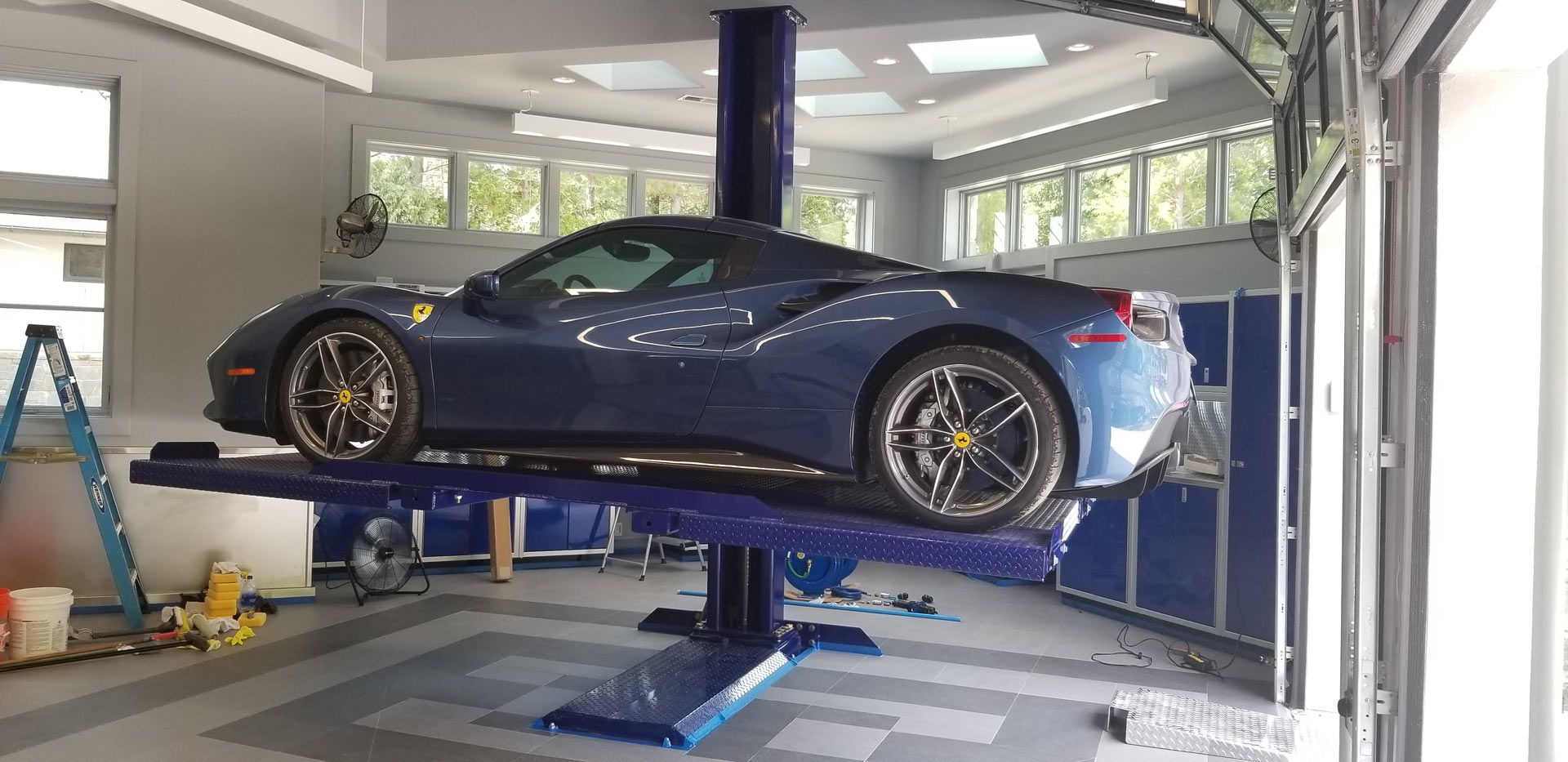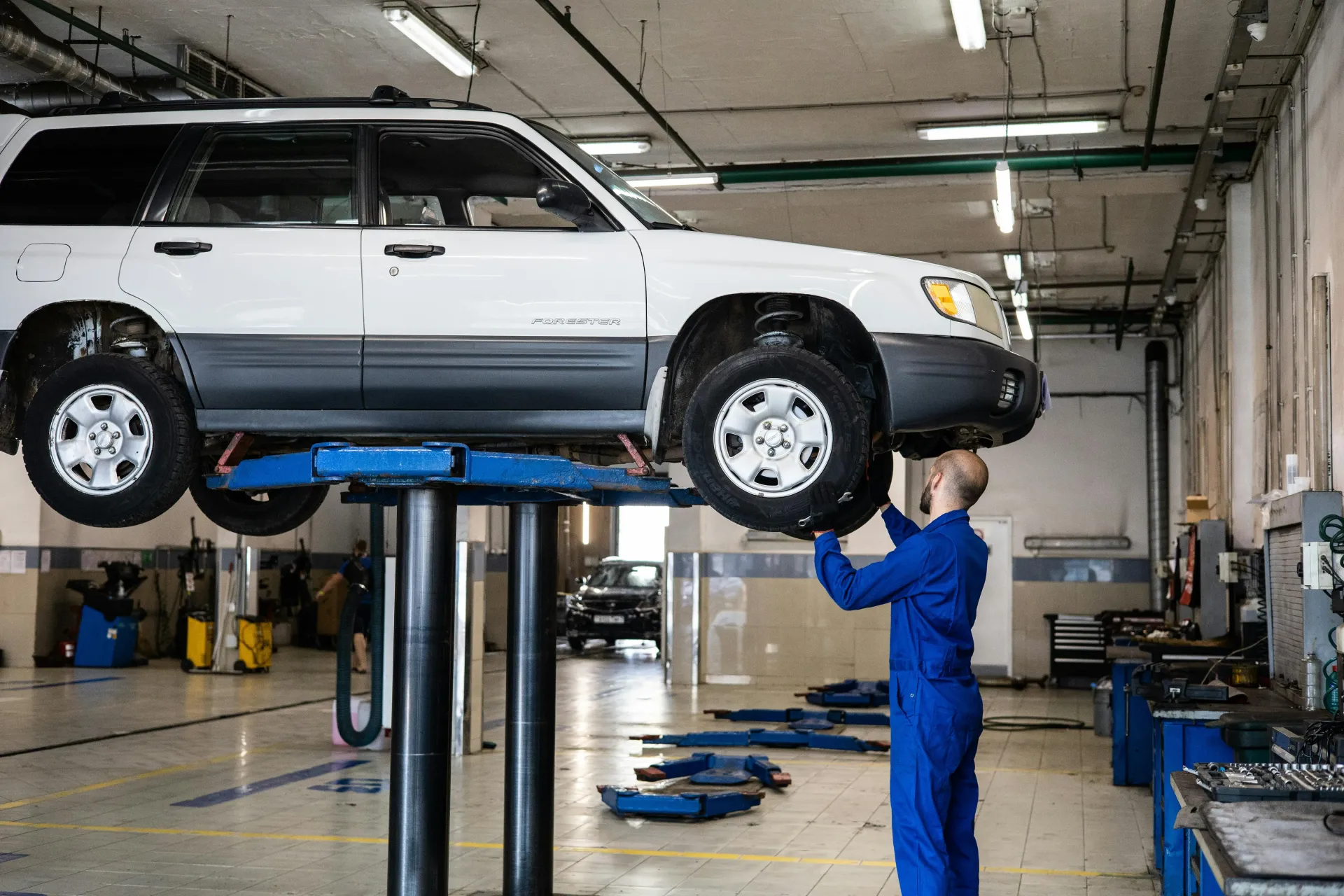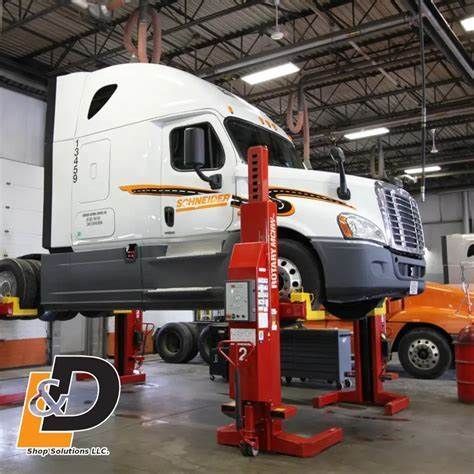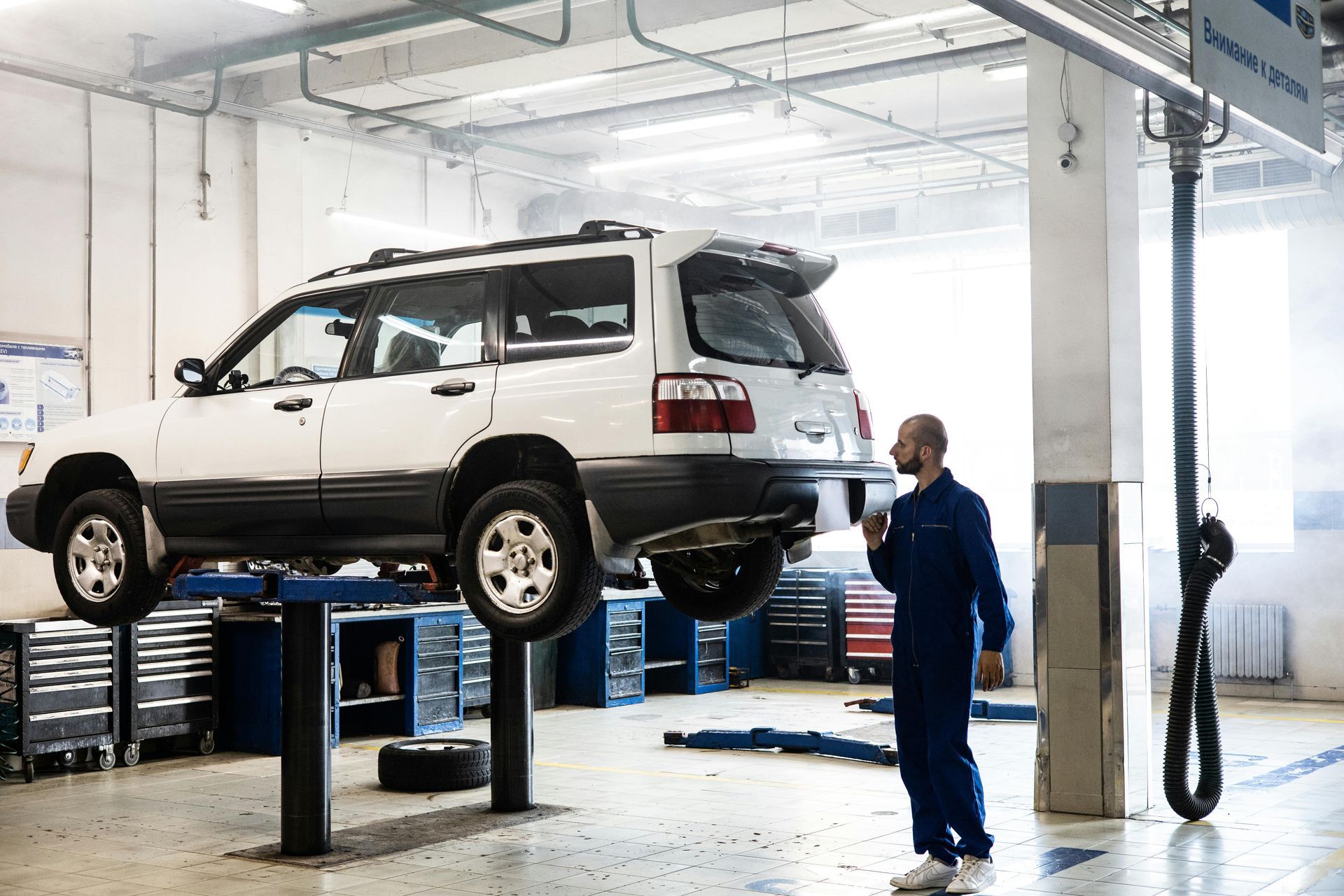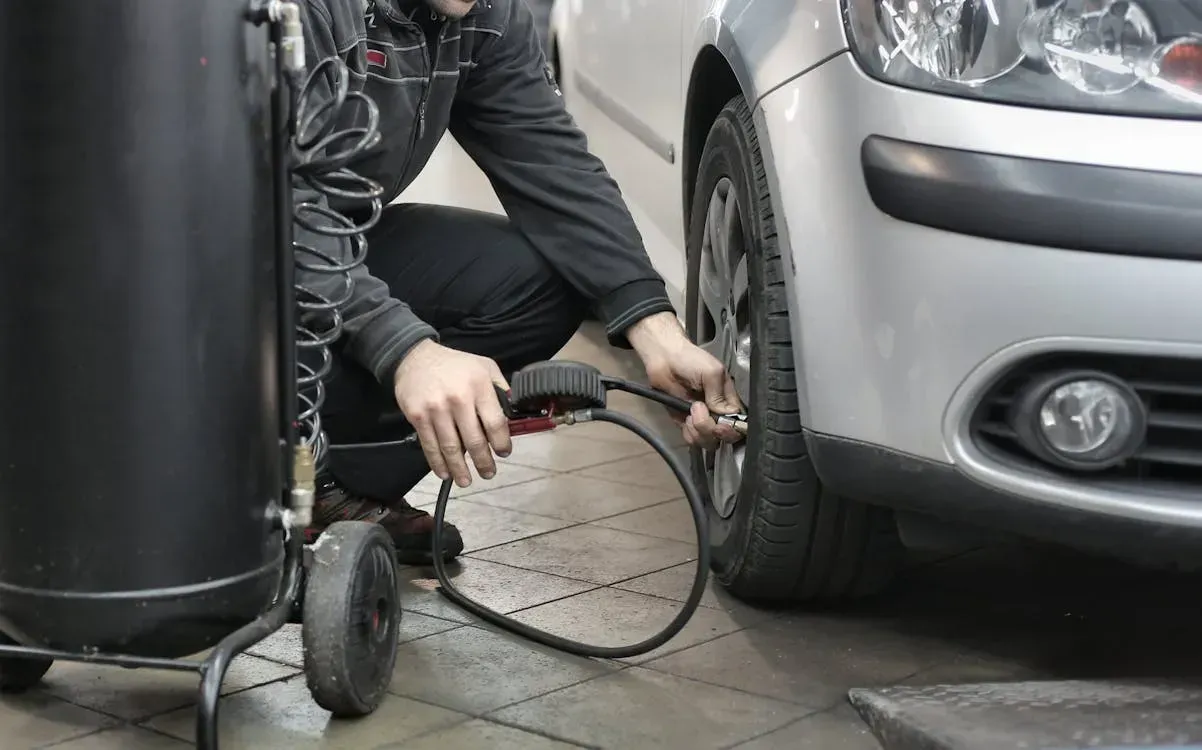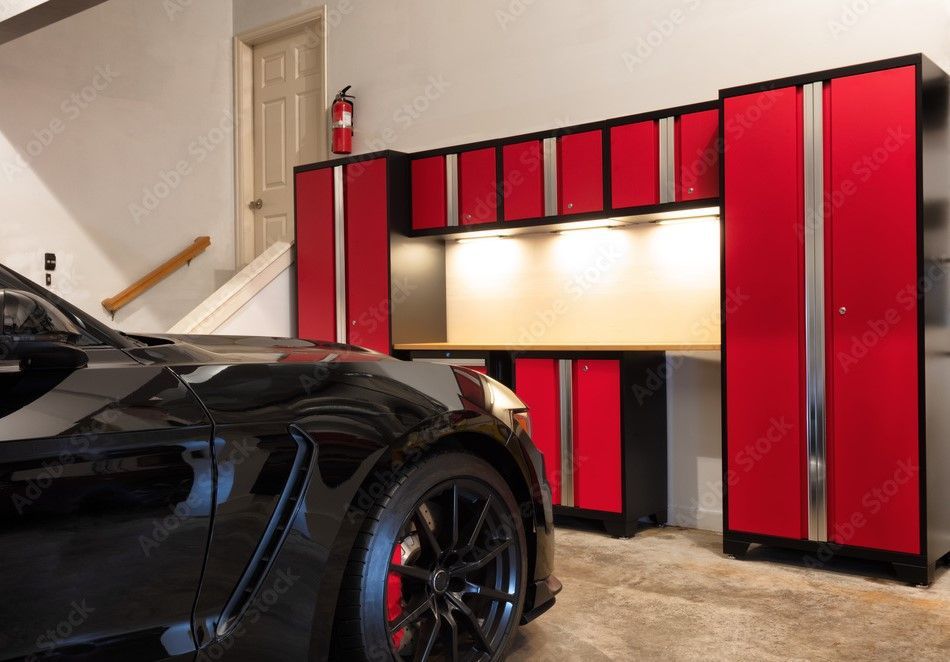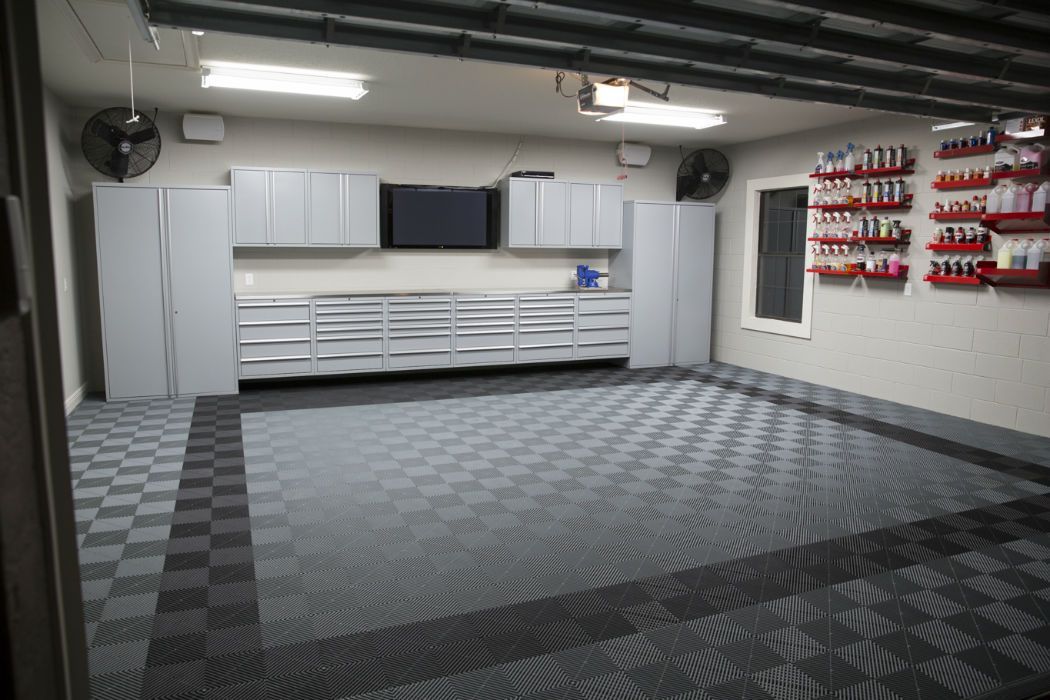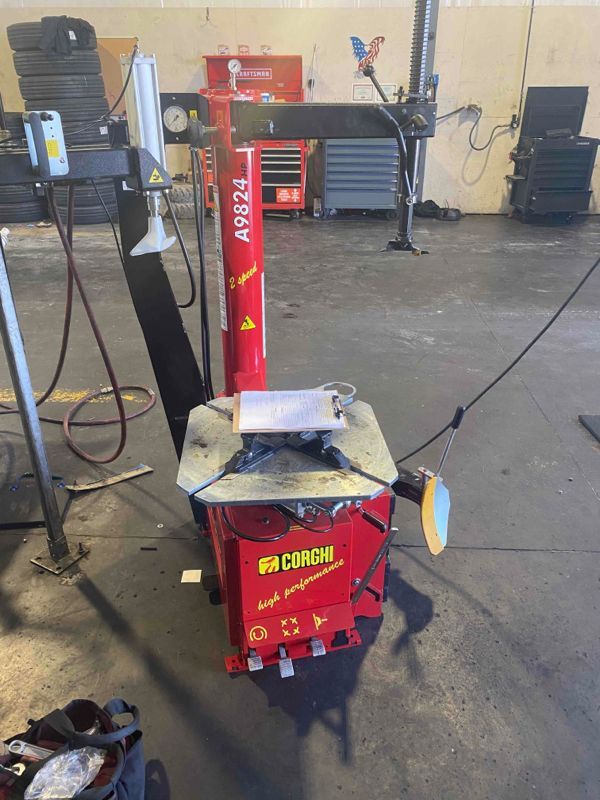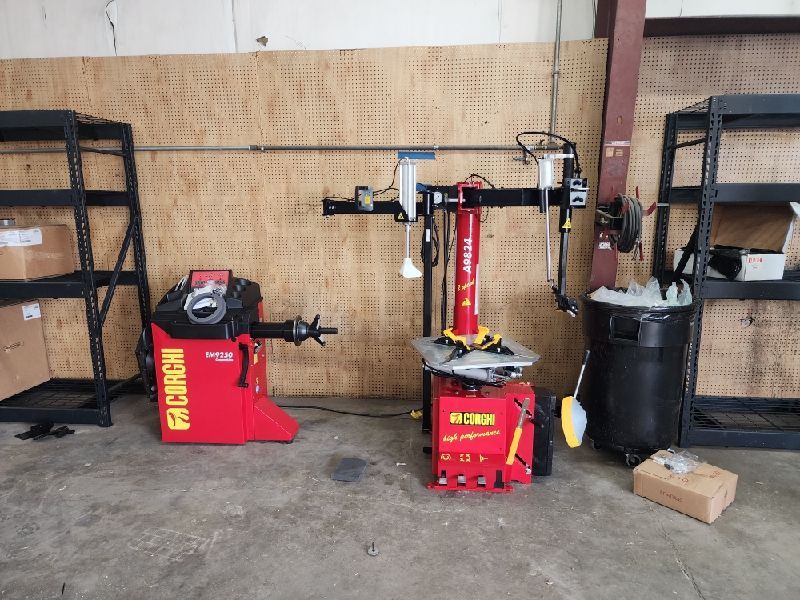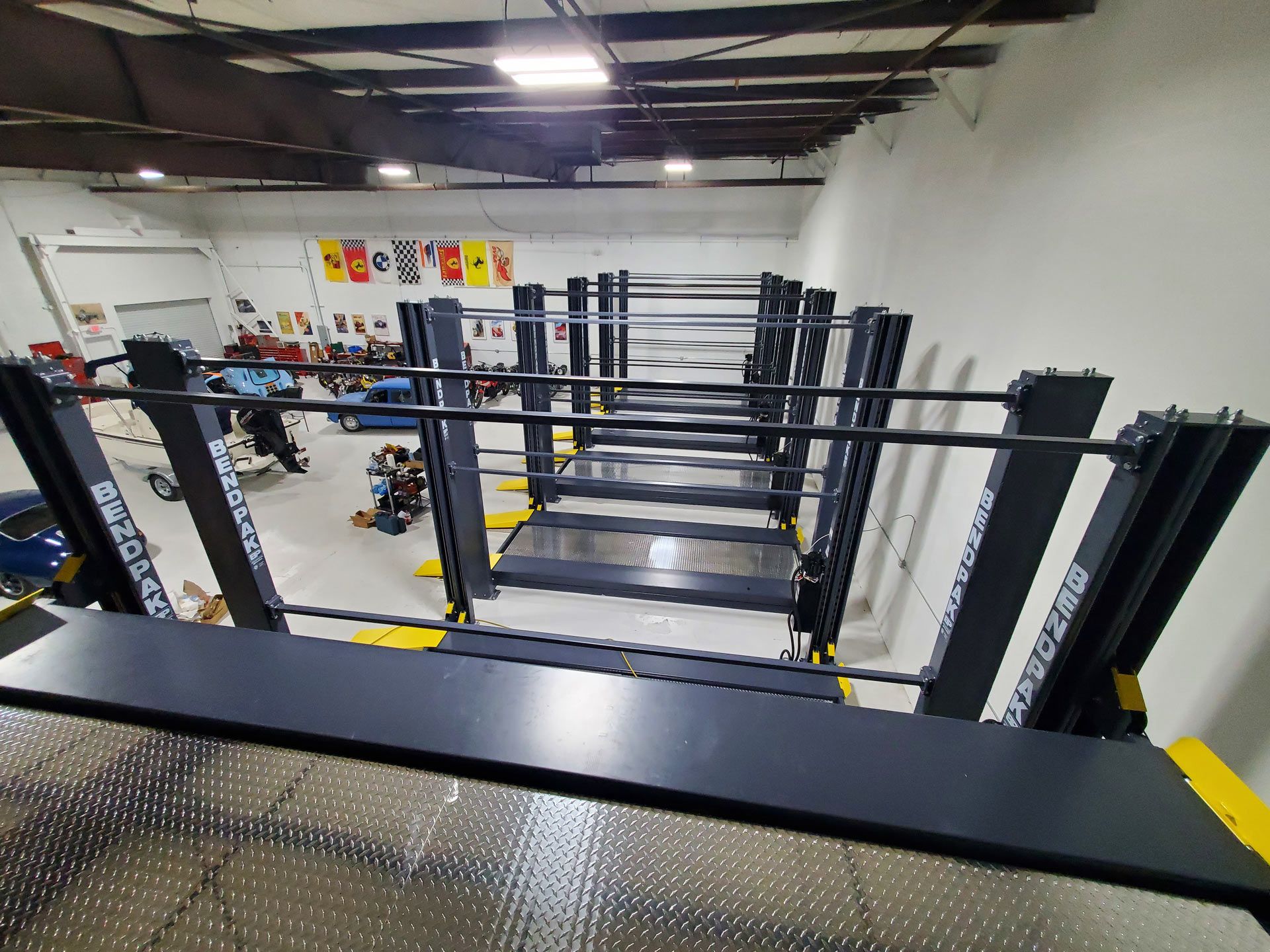How to Create a Safe and Efficient Tire Service Area in Your Garage
September 29, 2025
Introduction
A well-designed tire service area is the heart of any successful automotive shop. Whether you’re running a high-volume repair center or a smaller garage in Angier, NC, the way your tire area is organized directly affects safety, workflow, and profitability.
Between heavy equipment, compressed air lines, and constant vehicle movement, even a small oversight in layout or equipment choice can lead to inefficiency—or worse, accidents. The good news? With the right setup and a focus on both safety and ergonomics, your tire bay can become one of the most efficient spaces in your operation.
In this guide, we’ll walk through how to design a safe, efficient tire service area, from floor planning and equipment selection to workflow optimization and daily safety habits.
What Makes a Tire Service Area Efficient
Efficiency in a tire bay isn’t just about speed—it’s about minimizing wasted motion and keeping technicians safe while they work. A well-optimized space helps your team perform more jobs per day without increasing stress or risk.
Key elements that influence tire service performance include:
- Proper equipment placement: Keep tire changers, balancers, and inflation stations within easy reach.
- Clear workflow paths: Avoid crossing movement between technicians or vehicles.
- Adequate lighting and ventilation: Improve visibility and comfort.
- Safety zones: Dedicated areas for high-risk activities like tire inflation or bead seating.
By integrating these factors from the start, you create a workspace that feels intuitive and promotes consistent productivity.
Essential Equipment for a Tire Service Bay
Choosing the right tools is one of the biggest steps toward an efficient tire area. Every piece of equipment should support both performance and technician safety.
Tire Changer
The tire changer is your central workstation. Choose one suited to the vehicles you service most often—whether that’s passenger cars, light trucks, or commercial fleets. Look for:
- Assist arms for low-profile or run-flat tires
- Reinforced bead breakers for heavy-duty work
- Built-in safety shields or guards
Wheel Balancer
Proper balancing prevents vibration and tire wear. Modern digital balancers offer faster cycle times and greater accuracy. Consider a unit that includes:
- Automatic data entry
- Laser-guided weight placement
- Hood safety interlocks
Air Compressor and Accessories
Compressed air powers nearly every tool in the bay. Make sure your air system is clean and reliable by installing:
- A
compressed air dryer to remove moisture
- Inline filters to protect tools and valves
- Regulators for precise pressure control
Lift or Jack System
Whether you’re using a two-post lift or a low-rise scissor lift, ensure it’s rated for your vehicle types. Confirm that anchors are secure, arms are properly aligned, and safety locks are tested daily.
Storage and Organization
Keep your space clutter-free. Use:
- Wall-mounted tool racks for quick access
- Tire carts and dollies to prevent back injuries
- Shelving for tire storage organized by size and type
How to Design a Safe and Efficient Layout
Creating the ideal layout takes more than lining up equipment—it’s about flow, visibility, and technician safety.
Step 1: Define the Work Zones
Divide your tire bay into clear functional zones:
- Vehicle zone: For lifting, removal, and installation.
- Service zone: For tire changing, balancing, and inflation.
- Storage zone: For tire racks and used tire disposal.
This separation prevents congestion and minimizes the risk of tools or hoses becoming trip hazards.
Step 2: Plan for Workflow
Arrange tools and equipment in the order technicians use them. For example:
- Vehicle enters lift bay.
- Wheels removed and rolled to changer.
- Tires serviced and balanced.
- Wheels returned to lift for installation.
This logical progression eliminates unnecessary walking or crossover movement.
Step 3: Prioritize Safety Features
Your tire service area should meet or exceed OSHA and manufacturer safety standards. Important safety measures include:
- Proper air line routing to prevent tripping.
- Guarded inflation cages for large tires.
- Emergency shutoffs for compressed air systems.
- Anti-slip flooring to prevent falls.
Also, maintain fire extinguishers, eye wash stations, and first-aid kits nearby.
Step 4: Ensure Lighting and Ergonomics
Bright, uniform lighting helps technicians detect damage, align weights, and seat beads safely. Overhead LEDs are energy-efficient and reduce shadows.
For ergonomics, position machines at waist height and use assist arms or lift tables to prevent bending or strain.
Step 5: Maintain Cleanliness and Organization
A tidy workspace is a safe one. Schedule regular cleanup and inspections to check for oil leaks, debris, or worn-out hoses. Label tools and storage bins for easy access.
Daily Safety and Maintenance Practices
Even the best setup won’t stay efficient without consistent upkeep. Build these habits into your daily or weekly checklist:
- Inspect equipment: Check for air leaks, loose bolts, or hydraulic issues.
- Drain air tanks: Moisture buildup can damage tools and tires.
- Calibrate balancers: Ensures accurate readings and prevents comebacks.
- Check electrical cords and lines: Replace any that are worn or frayed.
- Review safety training: Keep technicians updated on new procedures.
When everyone follows the same standards, the shop runs smoother—and safer.
Frequently Asked Questions
What’s the most common safety mistake in a tire service area?
Improper tire inflation without a safety cage. Always inflate large or heavy tires in a designated, enclosed zone.
How can I make my tire bay more space-efficient?
Use vertical storage, compact equipment layouts, and mobile workstations. Avoid storing excess tires or parts in active work areas.
Do I need separate air lines for tire inflation and tools?
Ideally, yes. Dedicated lines prevent contamination and allow independent pressure control.
How often should I service my tire changer and balancer?
Perform a quick inspection daily, with full preventive maintenance every three to six months depending on usage.
What flooring is best for a tire service area?
Epoxy-coated concrete or textured rubber mats. They resist oil and provide slip resistance while being easy to clean.
Conclusion
A safe and efficient tire service area is more than just a workspace—it’s an investment in your shop’s productivity, safety, and reputation. With the right layout, reliable equipment, and disciplined maintenance, your garage can handle higher volumes with fewer risks.
For shops in Angier, NC, optimizing your tire bay isn’t just about convenience—it’s about creating a professional environment that keeps technicians safe and customers satisfied.

